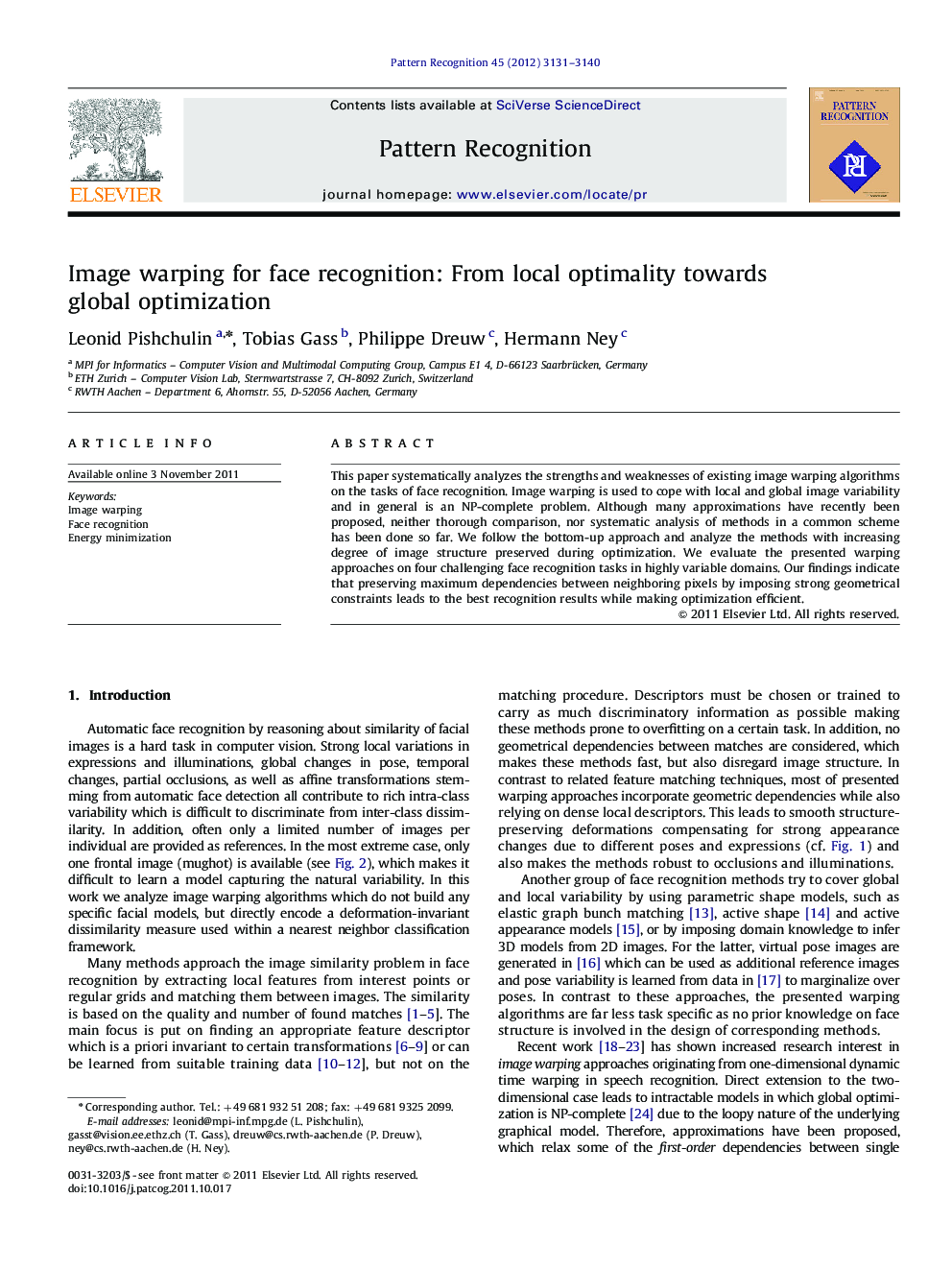| Article ID | Journal | Published Year | Pages | File Type |
|---|---|---|---|---|
| 533363 | Pattern Recognition | 2012 | 10 Pages |
This paper systematically analyzes the strengths and weaknesses of existing image warping algorithms on the tasks of face recognition. Image warping is used to cope with local and global image variability and in general is an NP-complete problem. Although many approximations have recently been proposed, neither thorough comparison, nor systematic analysis of methods in a common scheme has been done so far. We follow the bottom-up approach and analyze the methods with increasing degree of image structure preserved during optimization. We evaluate the presented warping approaches on four challenging face recognition tasks in highly variable domains. Our findings indicate that preserving maximum dependencies between neighboring pixels by imposing strong geometrical constraints leads to the best recognition results while making optimization efficient.
► We systematically analyze existing image warping algorithms in a common scheme. ► Methods are compared respecting the degree of preserved image structure. ► Approaches are evaluated on face recognition tasks in highly variable domains. ► We found that preserving much image structure leads to best recognition results. ► Imposing strong geometric constraints makes complex warping approaches efficient.
